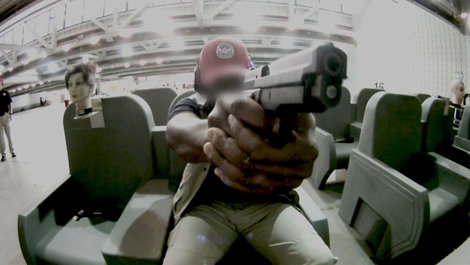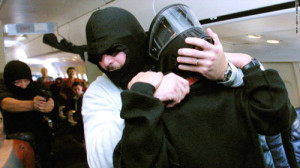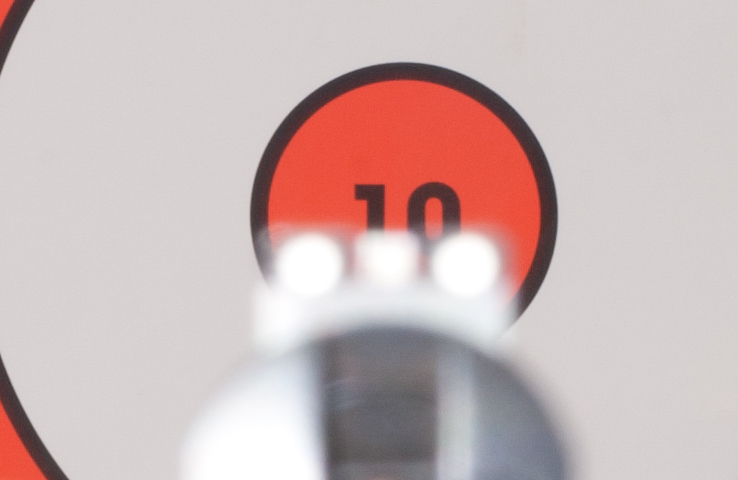
The Bloodhound Whisperer: Bob Cameron
[su_heading size=”30″ margin=”0″]SAR Veteran, Bloodhound Trainer Bob Cameron Has Spent A Lifetime Helping Locate The Lost[/su_heading]
[su_dropcap style=”light” size=”5″]C[/su_dropcap]all this guy! He’s lived an incredible life and has amazing stories,” my editor told me. So, I called Bob Cameron, a veteran of the US Air Force, an expert bloodhound trainer and handler, an expert witness for tracking, a legend in search-and-rescue (SAR) and the inventor of the most important $5 tool you will ever own. But first, to understand Cameron you have to understand bloodhounds and life in the rugged states of Montana and Idaho.
 Cameron’s first experience with a missing-persons search came when he was a young teenager in the mountains of northern California’s Alameda County. The local sheriff’s deputies were looking for a couple of missing girls, and Cameron volunteered to help. Sixty years later, he is still actively participating in searches, although according to him, “I don’t do the technical climbing anymore.” For all of those years, the only time Cameron wasn’t searching for people was during the three years (1951-54) he spent in the Air Force, stationed at Mather Air Force Base in Rancho Cordova, Calif. Like many men of his generation, he lied about his age – enlisting at age 16. He was part of the aircraft rescue and air police. His job was two-fold: respond to flight-line crashes and provide security for the base.
Cameron’s first experience with a missing-persons search came when he was a young teenager in the mountains of northern California’s Alameda County. The local sheriff’s deputies were looking for a couple of missing girls, and Cameron volunteered to help. Sixty years later, he is still actively participating in searches, although according to him, “I don’t do the technical climbing anymore.” For all of those years, the only time Cameron wasn’t searching for people was during the three years (1951-54) he spent in the Air Force, stationed at Mather Air Force Base in Rancho Cordova, Calif. Like many men of his generation, he lied about his age – enlisting at age 16. He was part of the aircraft rescue and air police. His job was two-fold: respond to flight-line crashes and provide security for the base.
AFTER HIS TIME IN THE AIR FORCE, Cameron moved to the wilds of Montana. He became active with SAR at his local sheriff’s office, and his involvement with bloodhounds happened by accident – literally. Ralph McKenzie, Cameron’s best friend, had been working SAR in Coeur d’Alene, Idaho. He was hurt while on duty and could no longer care for a SAR bloodhound. He called Cameron and said, “I have a surprise for you.” That surprise was three-year-old Radar – Cameron’s soon-to-be best friend and partner in crime.

BLOODHOUNDS HAVE an incredible sense of smell combined with a natural predilection to track. They have a long-term memory for scents, and can deftly distinguish one from another. According to Cameron, “Every sheriff’s office in this country should have a bloodhound for their SAR teams.”
We humans slough off 10,000 body cells a second. When we get excited, or scared, that number can jump to 100,000. The cells are distinct in their smell. You and I can’t smell them, but bloodhounds can and use them to track. They follow the scent of the cells. Most of the time the handler uses what is called a scent article – a shirt, sock, pants, bed sheets or anything that the target person has come in contact with will work. Once the dog has recognized and imprinted the scent, the hunt is on.
Handlers don’t always have a scent article for the hound, so they have a unique talent called drop-scent tracking. The dog is allowed to smell everyone present and then tracks the smell of the person who is no longer present. It’s the dog’s process-of-elimination skill. Amazing!

AS ONE CAN IMAGINE, SAR work can be very rewarding. Reuniting missing loved ones, catching criminals and rescuing stranded people bring these workers true satisfaction. However, not all searches have happy endings. Sometimes the work consists of body recovery and sometimes that body is of a child.
Jennifer, a two-year-old girl out of Grangeville, Idaho, was kidnapped from her bed on October 31, 1979. The county sheriff spent several days looking for the girl with no luck. They called Cameron and asked him to come and assist with the search. At the time Cameron lived in Hamilton, Mont., and worked as a deputy sheriff for Idaho County, Idaho. Cameron was understandably upset when he found out that the girl had been missing for a week. Three suspects voluntarily agreed to take polygraph tests. Two came to the office, but the third fled before testing.
His passion was so powerful that he gave a bloodhound to any law-enforcement agency or SAR team that wanted one.
The third, Robert Howerton, became the prime suspect, and using his T-shirt and a piece of little Jennifer’s bedding, Cameron and Radar began their search. The dog tracked through a wooded marsh area to an old trapper’s cabin. The cabin was green with moss, and inside they found mattresses stacked on top of each other also covered in moss – except for the very top one, which had been wiped off. Radar kept alerting to a ladder that accessed the attic. In the attic they found the little girl’s nightgown.
Radar continued to track from the cabin to the Clearwater River 3 miles away. At the river Radar began tracking down a dirt road, eventually losing the scent. After returning to the bank, Cameron was speaking with other searchers when Radar took off running down the river’s edge. The Clearwater was moving fairly quickly, so there was no way that the little girl could still be in the river – not after this long. But Cameron trusted his dog and asked the others if they had a boat or raft. Cameron and a couple of the men floated down the river in an inflatable raft until they came to a slow-moving eddy. They looked around and couldn’t see anything. As they were preparing to leave, Cameron looked straight down, and in about 5 feet of water he could see the shape of a tiny child. They’d found Jennifer. Cameron retrieved her moss-covered body and made history as the first expert witness allowed to present bloodhound evidence in a trial in Idaho. Howerton confessed to the kidnapping and was sent to jail, thanks mostly to Cameron and Radar having found the child’s body.

AS CAMERON BEGAN to understand the incredible benefits of bloodhounds, he decided to start breeding these amazing dogs. His passion was so powerful that he gave a bloodhound to any law-enforcement agency or SAR team that wanted one, and all they would have to pay for was the transportation of getting the dog there – that’s it.
In the mid-1980s, he got a call from Bob Herring, a young deputy in Fresno, Calif. Deputy Herring wanted a dog, but his sheriff wouldn’t allow it. Cameron wasn’t going to allow this to happen, so he pulled some strings and the deputy got his dog. The city of Fresno made a big deal of the dog coming onboard, and had all of the local press there to greet the bloodhound as he came off the plane. They named the dog Montana.

Herring and Montana made quite the pair, and went on to help locate dozens of victims during the Sanger, Calif., earthquake even while they were still in training. These two also caught a pair of thieves while traveling home from training in the mountains. Using the drop-scent technique, Montana was able to smell the store owners, then tracked the two thieves a couple of miles down the road, where Herring found them drinking their stolen beer. Herring, now retired, still trains officers on the use of bloodhounds.
EVEN WHILE CAMERON was raising dogs he was actively being called out on searches. He tells of a time when he and his partner John Michaels of Hamilton, Mont., were called to find a missing airman from Malmstrom Air Force base in Great Falls, Mont. Within 42 minutes of arriving on scene and getting a scent article, they and Radar found the wanderer. Had the lost airman gone any further, he would have ended up in lost in the wilderness and more than likely have died. The airman’s friends were amazed at how fast and physically fit Cameron and Michaels were. They were thrown off guard because the men were dressed in many layers, giving the appearance of being overweight rubes. When one of the airmen asked how they had gone straight up the mountain in the snow and found the man in 42 minutes, Michaels replied, “We just sit in the bar and drink beer until they call us.” No further explanation was given as they packed up and went home grinning.
In the 1980s a wealthy family bought a summer ranch next to the Salmon River in Idaho. The father raised Doberman pinschers and one pup was born with floppy ears, hence not worth selling, but his nine-year-old son wanted to keep it. The dad allowed it, and one summer day the boy and his dog wandered off and got lost in some of the most treacherous country in central Idaho. The sheriff called Cameron and asked for his help. Cameron and the team searched for the little boy, who by this time had been missing for five days. The terrain was steep and dropped almost vertically down to the Salmon, which is also known as “The river of no return.”

Finally, when they had almost given up hope, Cameron stood on a point overlooking the river and called the boy’s name as loudly as he could. A faint reply – “I’m down here” – led to the boy and his dog being reunited with his family. The father, a striking fellow standing well over 6 feet tall, was overcome with emotion. He offered Cameron a handmade walnut box. Inside was a rare S&W .357 revolver. Cameron explained that he could not accept the gift. After much discussion and negotiation – including a threat to throw the revolver in the river if it wasn’t accepted – Cameron took the gun on the condition he be allowed to raffle it off to raise money for a new SAR building.
“If You Can be Heard – You Can be Rescued!”

CAMERON NO LONGER conducts technical searches, but he remains dedicated to people who might go missing, and has invented a must-have tool for anyone who goes outdoors. It’s a whistle, but not just any whistle. It’s a whistle that is capable of 120 decibels, which is the equivalent of a rock concert or a chainsaw 3 feet away. This whistle has been adopted by the Coast Guard, Forest Service, National Parks Service, Army Corps of Engineers and Community Emergency Response Teams (CERT), to name a few. The slogan for his company, named Whistles for Life, is “If You Can be Heard – You Can be Rescued!” Blowing a whistle is much easier than screaming, and can be sustained for much longer periods. This whistle also makes a great personal-defense item. I blew one and it seriously attracts attention. The whistles come in bright colors and are lightweight, as well as flat, making them easy to find and carry. Cameron is also a charter member, patron member and golden eagle with the National Rifle Association. Whether it is searching for lost university students, backpackers in the mountains of Idaho and Montana, armed robbers or kidnapped children, Cameron has been there to help locate them.
I spoke with Cameron for more than two hours, and it was some of the best time I’ve spent in my life. He is one of a kind. I told him that my son is studying recreation management, and is interested in doing SAR. Cameron immediately asked for my son’s name and told me to have him call. Bob’s knowledge of search techniques and bloodhounds is immense, but his heart is even bigger. His life and experiences could easily fill a book, and it’s a book that needs to be written before his knowledge is lost forever.
In a world that often seems lost, it is thanks to people like Cameron and his partner Radar who are the light at the end of the tunnel. ASJ
Editor’s note: If you are interested in more information about Whistles for Life, you can visit them at whistlesforlifellc.com.

PHOTO CAPTIONS
Cameron was an Idaho County, Idaho, deputy sheriff, but worked with law enforcement agencies all over the country that needed his expertise.
Idaho County, Idaho, was very proud to have Radar as one of its citizens.




